
|   |

|   |
 e-mail: sunilkothari1933@gmail.com Astad Deboo's Rhythm Divine II: River Runs Deep March 12, 2017 Ever seeking new challenges and scaling artistic heights, contemporary dancer Astad Deboo choreographed Rhythm Divine II- River Runs Deep, with traditional drummers from Imphal, Manipur, in collaboration with Shree Shree Govindaji Natsankirtan headed by Guru Seityaban Singh. Presented by Astad Deboo Dance Foundation and Raza Foundation on March 3 at Kamani Auditorium, Delhi, the show was a runaway success from the word go. Astad has been working with Manipuri martial artists and drummers for the past 16 years. Ten years ago, the young, vigorous, steeped in their own cultural traditions Pung Cholom drummers performing in a comforting cycle of familiar security, and he started working together. Astad interacted with them with help of Guru Seityaban Singh, and planned contemporary work, exploring the tradition of Pung Cholom with eight drummers drawing inspiration from their movements, extracting the essential movements minus drums, resorting to abstraction, choreographing sections which reflected, as Astad explained in his program notes, more open articulation of old fears through bold, new creative with music and movement, a brasher engagement with restlessness and frustration. Slide show Photos: Avinash Pasricha 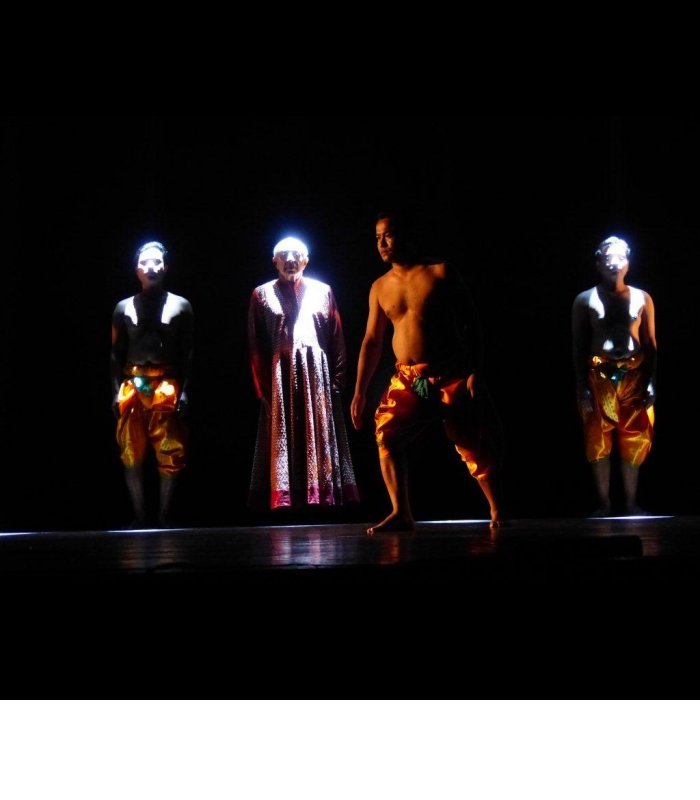

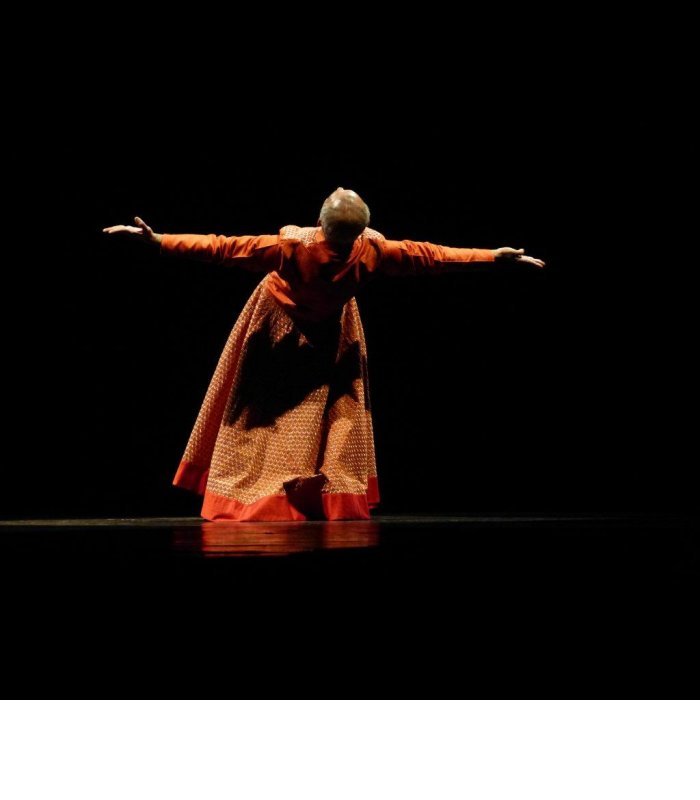
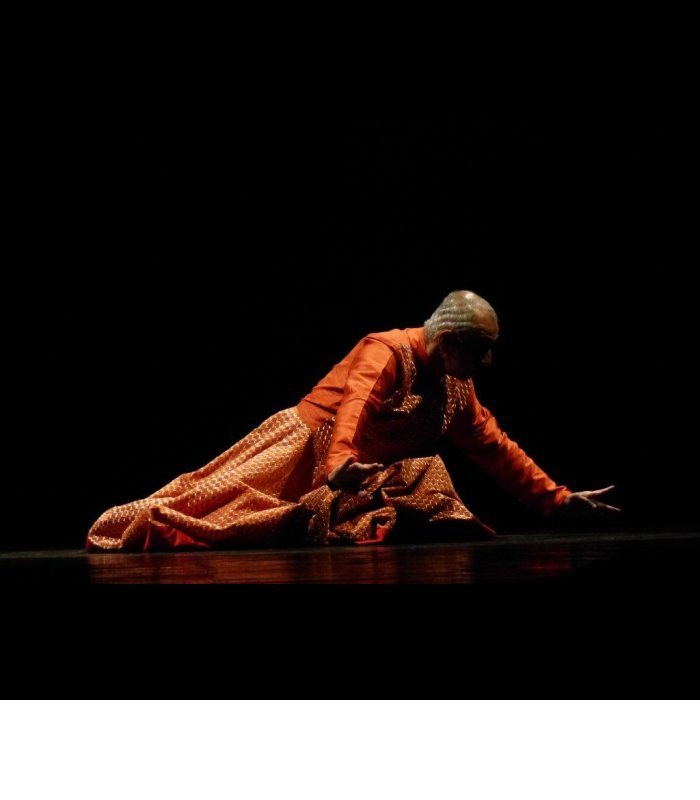
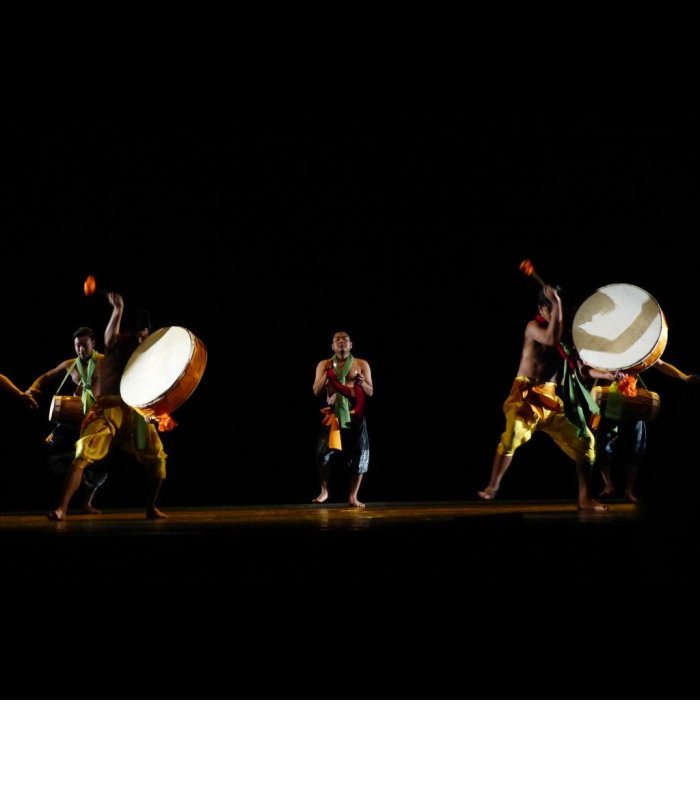


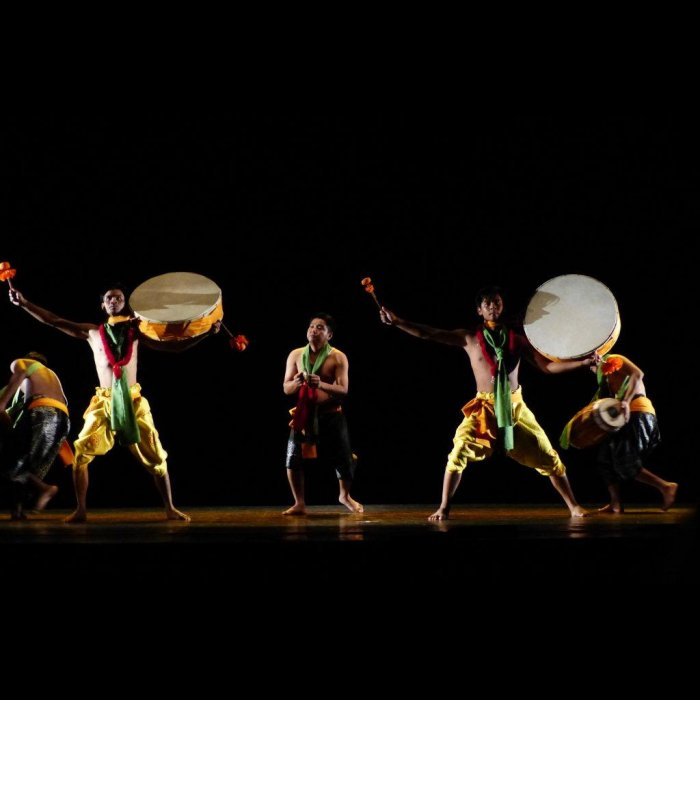
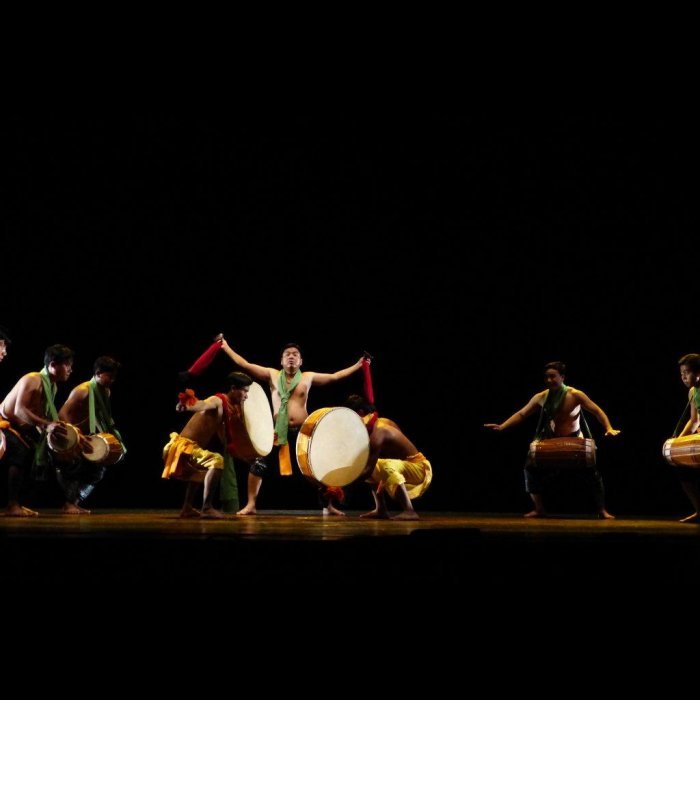

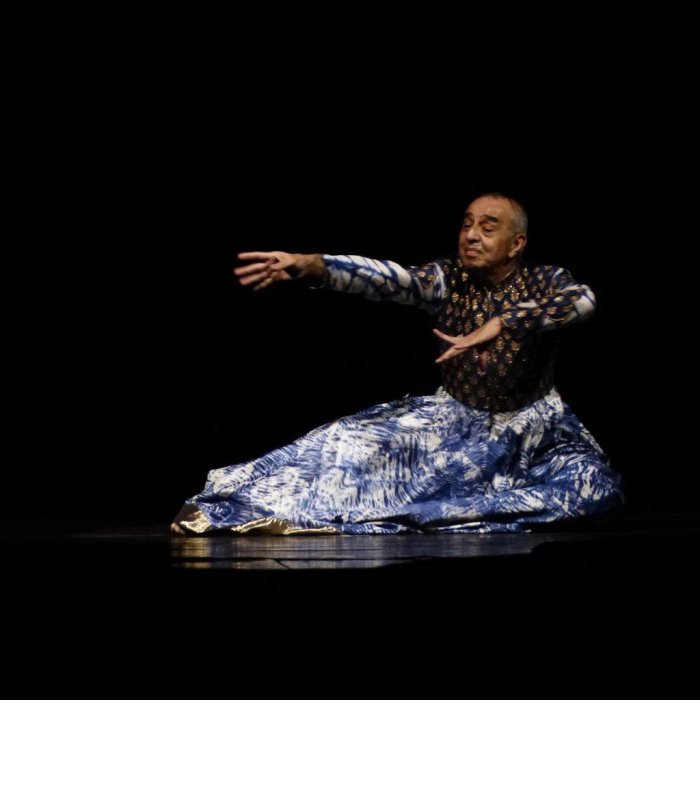
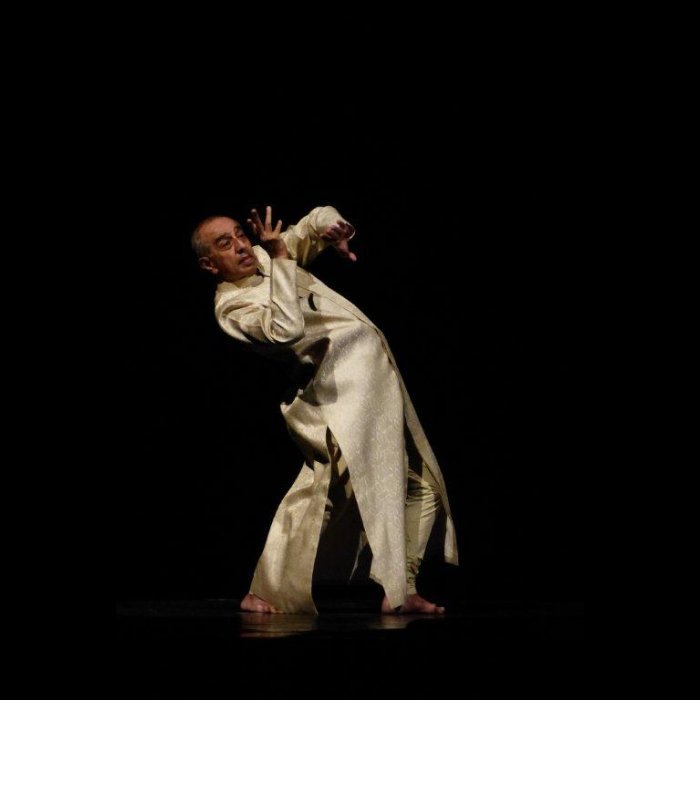
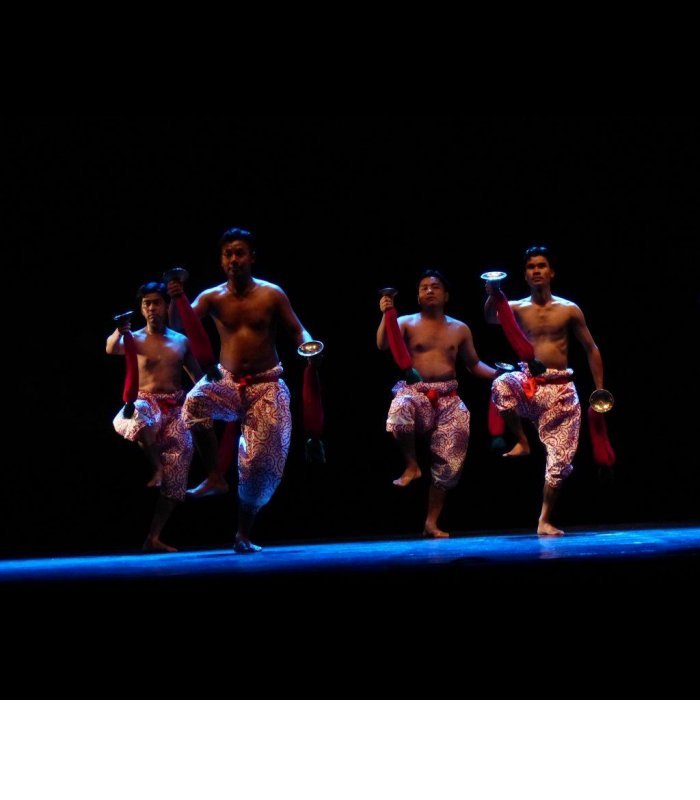
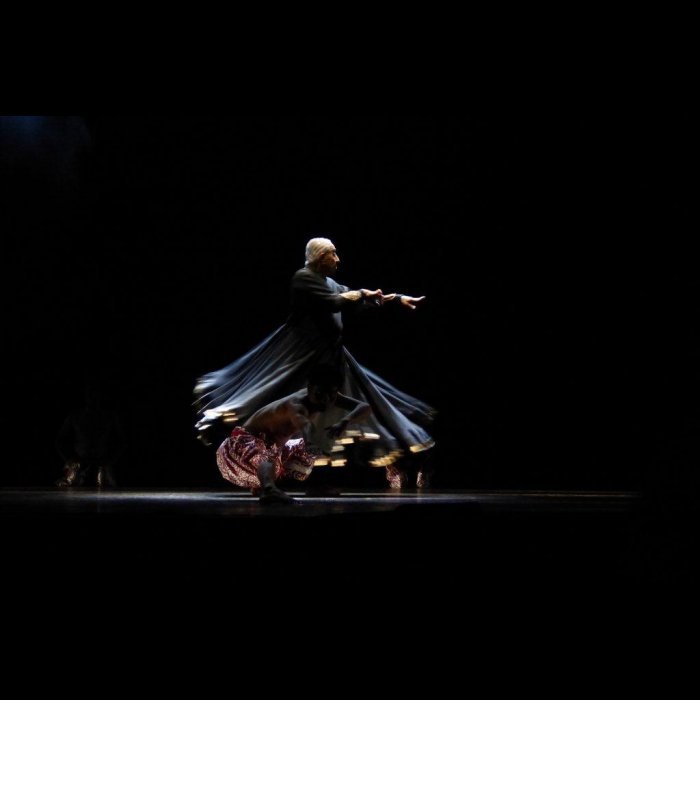

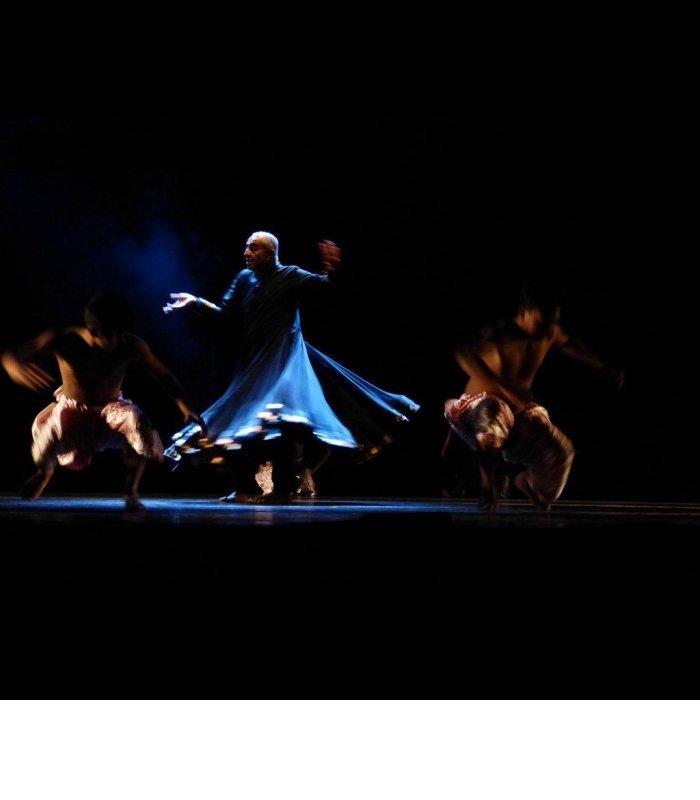

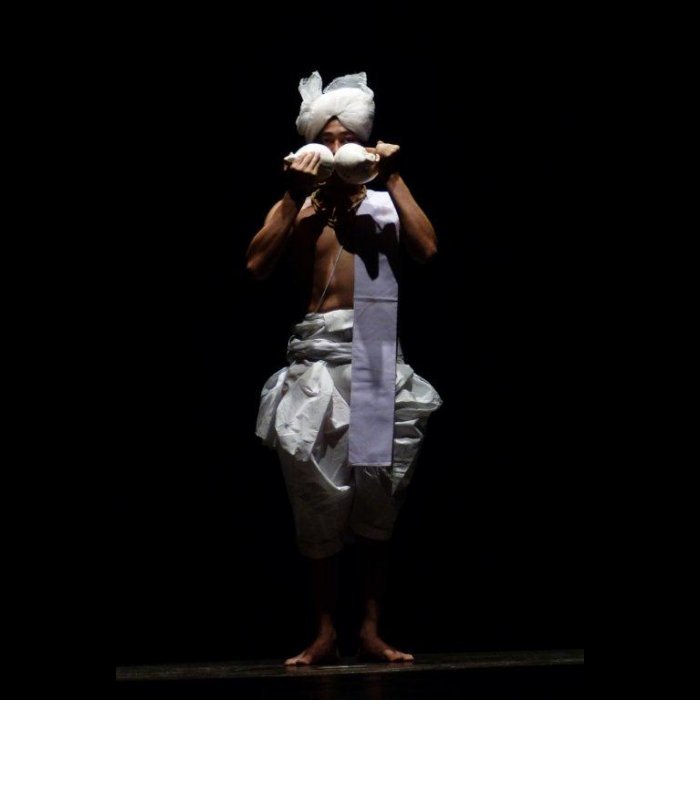
North East is a heartbreaking amalgam of natural beauty and militant aggression, of lightning moves and glacial response, of the turbulence of politics and the calm pace of tradition, flowing like Twin Rivers. Opening with a stunning visual, Astad in the centre and on either side the drummers with stream of light on them and drummers slowly moving in front, the slow pace, their bodies half in dark, half in light, the images suggested serene life below which there was restlessness. The gradual build up against fear and prolonged silence to music by Takashi Kako, Keith Jarett and Nik Bartsch evoked soothing feelings of quiet and also of disturbance. Astad's solo in flaring skirt like specially designed costumes by Archana Shah, Monica Shah, Krishna Mehta, with extremely slow but controlled movements, bending backwards, using minimal hand gestures, quivering fingers and with minimal gestures maybe praying to powers divine, was hypnotic. These movements devised by Astad have his stamp. The groups of drummers performed sometimes to silence and sometimes to music beats, in circles, holding arms, forming a long chain, moving in a manner suggesting waves, water flowing, at times whirlpools and at times gentle flow. The graceful movements had special regional quality and with slow pace the images of running river were conveyed. In one sequence they all crept on the floor, moving slowly towards each other, crossing each other, slowly rising in half sitting position and suddenly standing up with crescendo and moving powerfully giving a loud sound as if they were establishing their heroic position conveying the feelings of anger. Interspersing with such group compositions were solos of Astad full of feeling, holding his palms near his face, body moving backward with astounding balance. The virtuosity of drum playing, aerial somersaults, taking breathtaking rounds and landing on perfect sam, the final beat, were mind blowing. In one sequence with Dhol Cholom, two drummers with round drums and others with dhols performed in two parallel rows, with such vigour, placing round drums on floor, the two drummers, beating drums and taking aerial somersaults that one marvelled at their amazing skills. Astad has in recent years mastered the technique of chakkars, drawn from classical Kathak which he studied at a young age, which creates a hypnotic effect. He takes continuously countless chakkars, round and round for nearly 20 minutes without ever losing balance. Around him drummers took circles, performed their acrobatic skills, brought mandila (cymbals with red tassels), but did not strike them except in the end. The movements from Karatal Cholom also were used imaginatively. So were movements from the martial arts of Thang Ta. The traditional numbers like Kartal Cholom, minus clapping, and then clapping, all merged well in overall choreography. Towards the end, the drummers arrived in their traditional white dhotis and pugrees. They unleashed energy, while playing drums in Pung Cholom numbers with intricate talas, at times mere murmur of drums and then spasmodic release of sounds, dancing in circles, and in perfect coordination with a little jerk of head, threw pugrees on the floor, continuing their performance. It instantly won rounds of applause. The audience by then was eating out of their hands. The drummers encouraged the audience to clap in rhythm, which the enthusiastic audience did and the entire auditorium was all agog with sound of claps of audience and the drumming by the drummers. Such audience participation was infectious. The traditional Pung Cholom brought down the house. Playing two conches, an artist transported one to the temple in Manipur. The finale was so captivating that audience rose to their feet and gave them standing ovation. The entire presentation was thoroughly professional and of international level, with excellent lighting by Milind Srivastav. Those fortunate ones who attended the show shall remember the performance for long and those who missed have indeed missed it. It was a show to remember.  Dr. Sunil Kothari is a dance historian, scholar, author and critic. He is honored with Padma Shri, Sangeet Natak Akademi award and Senior Critic Award from Dance Critics Association, NYC. Post your comments Please provide your name and email id when you use the Anonymous profile in the blog to post a comment. All appropriate comments posted with name & email id in the blog will also be featured in the site. |